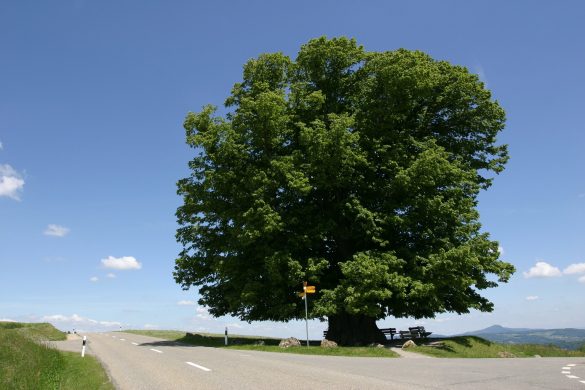Det betyder, at de bliver ved med at optage drivhusgassen CO2 fra atmosfæren, en gevinst for vores klima. Meldingen overrasker, fordi unge træer ellers krediteres som de mest CO2-absorberende.
It may seem unlikely, but an international team of researchers has found that most large trees keep absorbing atmospheric carbon dioxide (CO2) even in old age, The Climate News Network writes Sunday.
LONDON, 26 January 2014: Giant trees could play a giant role in fixing carbon dioxide from the atmosphere.
This counter-intuitive discovery – surely, young faster-growing trees would be more efficient at soaking up carbon? – emerges from a study of more than 403 species by a consortium of 38 scientists in 16 countries who report in Nature.
Nathan Stephenson of the US Geological Survey and his 37 colleagues between them studied data collected from more than 650,000 individual trees on six continents over a span of 80 years to show that the world’s oldest trees actually grow more quickly, and also accumulate carbon more rapidly than younger, smaller trees.
Some trees are known to reach vast heights and masses. But acknowledged giants such as the Australian mountain ash Eucalyptus regnans and the coastal redwood Sequoia sempervirens are not just lonely examples of spectacular weight gain.
The researchers observed continuing gains in 97% of the trees surveyed. “Rapid growth in giant trees is the global norm and can exceed 600 kg per year in the largest individuals”, they reported.
“In human terms it is as if our growth just keeps accelerating after adolescence, instead of slowing down”, Stephenson said. “By that measure, humans would weight half a ton by middle age and well over a ton by retirement.”
Continued utility
The research matters for three reasons. The first is that it is a tribute to the power of patient data collection over decades: much of it by amateur naturalists and natural history and conservation groups.
The second is that it adds significantly to the chances of making more complete sense of the great carbon conundrum – where, when carbon disappears from the atmosphere, does it go, and how long does it stay there?
And the third is that it helps resolve the open question of whether established forests can continue to serve as reservoirs of atmospheric carbon. In August, researchers published a study in Nature Climate Changethat suggested that Europe’s forests, for instance, might have reached saturation point.
Previous studies have tended to measure forest growth at the level of the leaf, and the level of the forest as a whole. Stephenson and his colleagues considered the tree as the agency that mattered most, and observed a different outcome.
They calculated that a single large, old tree could add as much carbon to the forest in one year as was contained in an entire middle-sized tree. Even though individual leaf level productivity declined with age, the tree’s total leaf area increased to outpace this decline.
More questions
So even though each leaf might be less efficient at absorbing carbon, the tree kept on growing because it was bigger and therefore had more leaves with which to soak up nourishment from the atmosphere.
It’s a question of scale: in the language of mathematics, total tree leaf mass increases as the square of trunk diameter. So a tree that makes a tenfold increase in diameter will make a 100-fold increase in leaf mass, and at least a 50-fold increase in total leaf area.
To put it another way, in old western US forests, individuals more than a metre across comprised 6% of the tree population, but contributed 33% of the annual forest growth in terms of mass.
But, as usual, such research raises more questions that must be settled.
The authors themselves warn that what is true for individual trees might not hold for stands of trees in a block of woodland. As trees age, some will die, leaving fewer individuals occupying an area of forest, and therefore possibly less carbon overall.
“Our results are relevant to understanding and predicting forest feedbacks to the terrestrial carbon cycle and global climate system”, the authors write.














